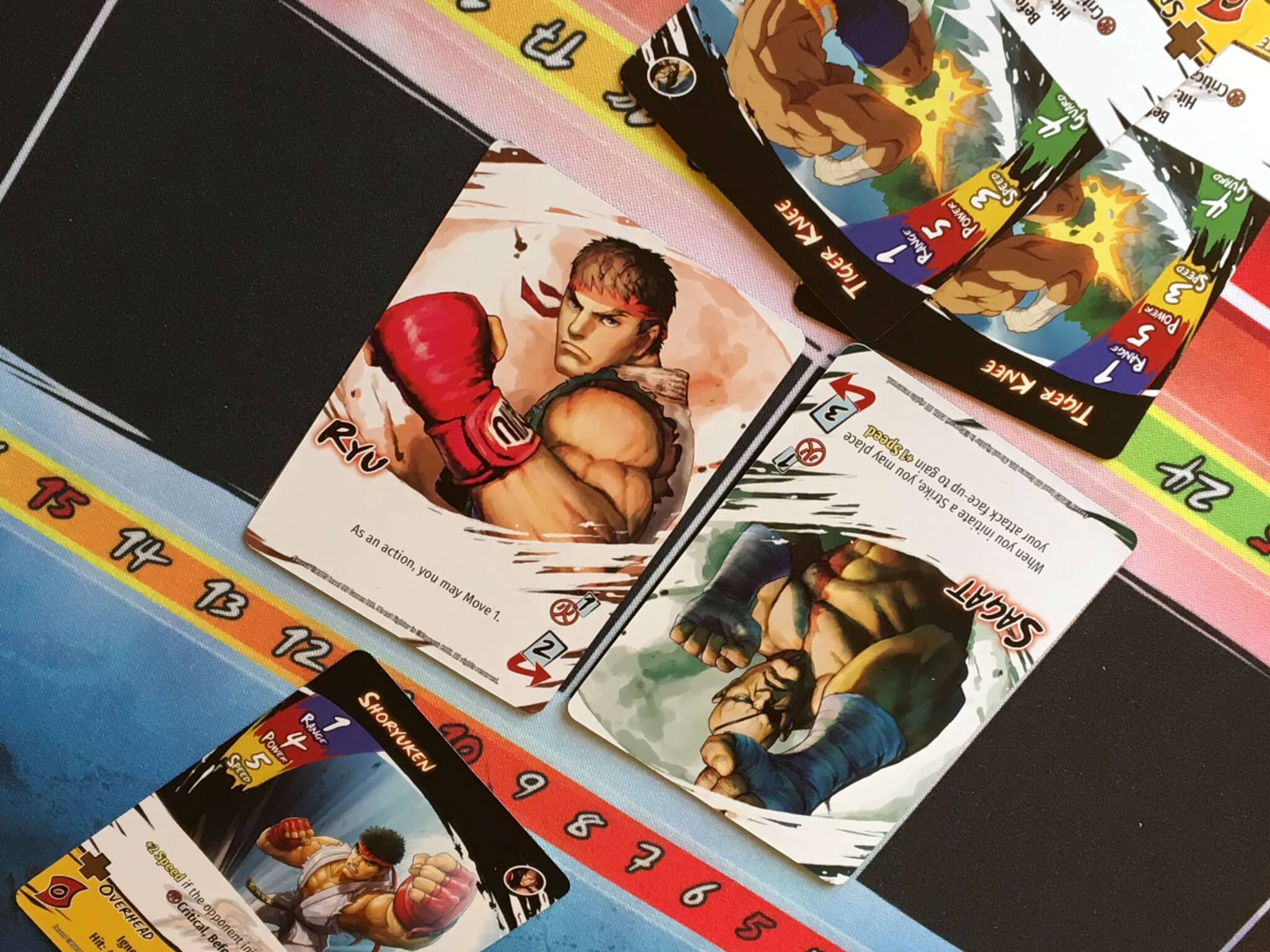There isn’t a videogame series on Earth that is more iconic than Street Fighter and there are few card combat systems held in higher regard than EXCEED, from Level 99 Games. Combine these two properties and what do you get? Let’s find out.
The EXCEED fighting system has been used before, albeit previously without a licensed intellectual property to draw from or rather, without a licensed property as big as Street Fighter to draw upon. Needless to say, the system needs to be up to scratch if it’s going to be able to replicate the fast but precise arcade combat that Street Fighter is known for — it does this by keeping things relatively simple, and limiting games to about fifteen minutes.
In EXCEED: Street Fighter on each turn, the current player will take an action with the cards in their hand and then draw another one from the customised deck associated with their character. Sometimes, a player will want to move, which causes them to discard a card, whilst on other occasions, they’ll want to use a boost move, which also usually costs an additional card. To draw more than the allotted one card per turn, the player must prepare.

There are a few other options including gauging, which is a bit like building up your own super meter in several of the arcade versions of Street Fighter, since it requires the player to use the hits that they’ve scored so far to power it. On that note, players can also strike, which slightly changes the way that the game plays from turn based (which it is outside combat) to simultaneous, in order to resolve the conflict.
When one player chooses to strike the other, both players choose one card, check to see which attack is faster and then resolve any resulting damage or effects. As you might hope, the result of damage dealt is both thematic (Ryu’s damage effects are very different to Zangief’s, for example) and exciting. A number of hit points might be lost at the most basic level, but more interestingly, throws will move enemies several spaces away, whilst blocked attacks might leave the attacker open to a counter.

Each deck of just under forty cards contains around twenty cardsthat are unique to the character in question, whilst the other half are shared punches and kicks that are common to all characters. For me, this gives just enough distinction between one character and the next, whilst still allowing for a high degree of familiarity. It helps that EXCEED: Street Fighter is presented as three separate products, each of which comes with four characters — which is plenty) to allow for players to experience the system at a reasonable price point before investing fully.
In the Ryu box, that we were sent for review, you won’t be surprised to see a deck for Ryu, but there’s also Sagat, Zangief and Akuma. The Chun-Li box contains Chun-Li, C. Viper, Vega and Dan, whilst the final, M. Bison box includes Bison himself, plus Cammy, Ken and Guile. Sadly, I think Chun Li’s box is way off the pace in terms of personalities, but then again, I can name more than one fan of each of the characters except perhaps C. Viper.

In any case, the main thing is that a good range of characters are represented in each box and almost any player should be able to find one of their favourites. I have no doubt that Level 99 Games will expand the game further as well, especially if the interest in these initial releases is high. You’ll also notice that in our shots, I’m using the official playmat, which is a really well made and vibrant cloth and neoprene (I think) construction that makes picking up and rotating cards a doddle.
I’d also like to commend the artwork as well, which uses the most up to date looking Street Fighter art style and caricatures. The card art is great, with the unique cards showing the moves that they represent being performed by the relevant character, whilst the generic cards show a number of characters — all clearly performing the action described. Most importantly, the speed, range and power of each attack is also shown, making EXCEED: Street Fighter easy to play and clearly understandable.

Another aspect of the game which appears to be unique to EXCEED: Street Fighter (and isn’t present in other uses of the system) is the Critical attack that sits on many of the cards. These attacks add an additional damage or status effect to many of the standard moves when a Gauge is spent, which makes them feel like the more impressive-but-not-quite-super moves that occur in the videogame.
Overall, I find it hard to fault EXCEED: Street Fighter in any material way. It’s a superb two player brawler that feels fast and frantic — just as a digital fighting game would. It looks fantastic and makes impressive use of a very popular and much loved license and it takes material steps to introduce unique features that link the EXCEED system to the Street Fighter narrative, theme and play style. Individually boxed decks make it both a portable and full table game that I think will be popular with a wide range of gamers.
EXCEED: Street Fighter is available now, and can be purchased from all good local games stores. For online purchases, please visit the publisher’s website.
Love board games? Check out our list of the top board games we’ve reviewed.
